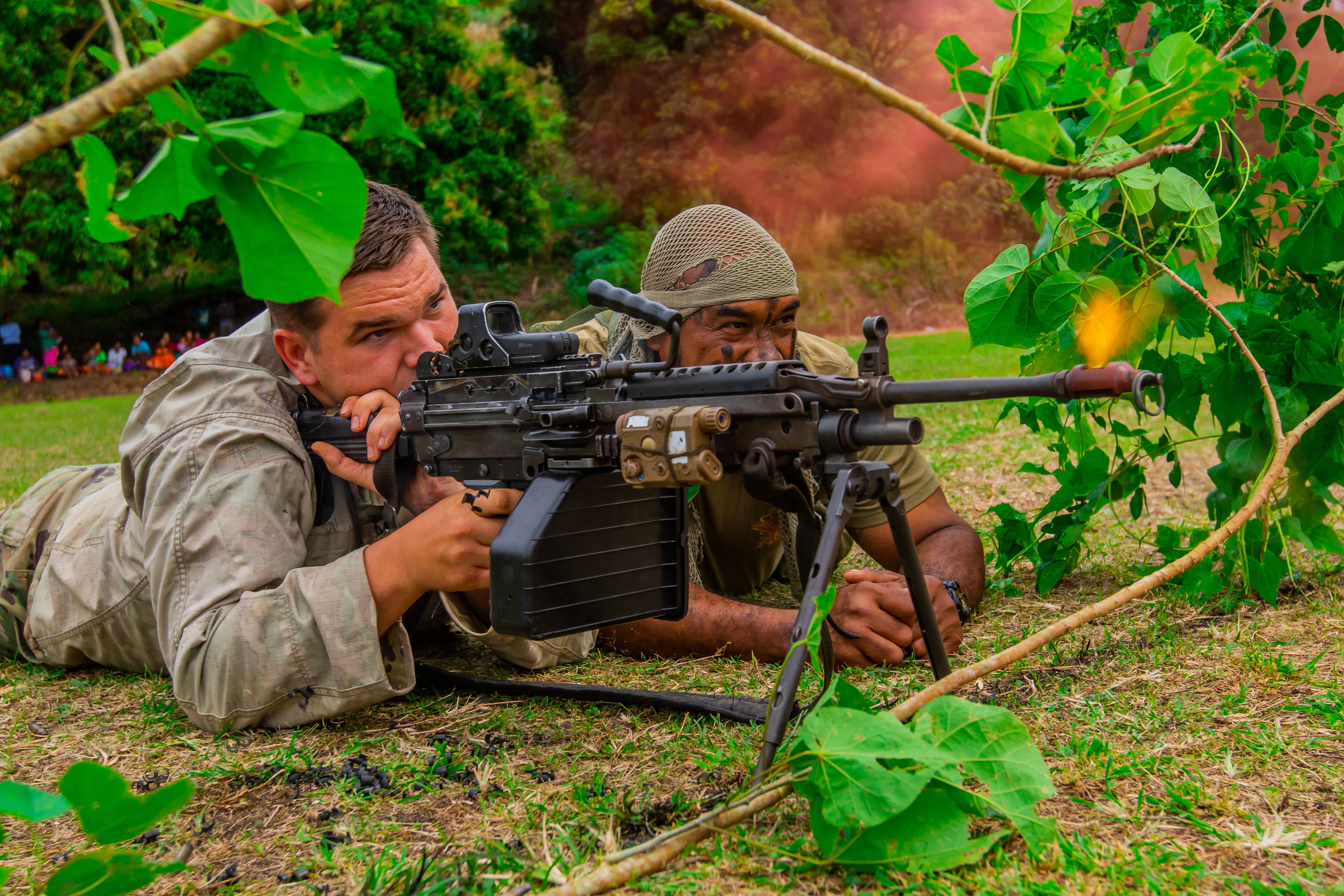WASHINGTON — As part of the U.S. Army’s effort to strengthen its partnerships with countries in the Indo-Pacific region, the service plans to deploy one of its security force assistance brigades, or SFAB, to the area for the first time, Army Secretary Ryan McCarthy said Jan. 10.
Up until now, SFABs, which the service began creating in 2017, have only been deployed to Afghanistan. While it’s always been a possibility in the minds of Army leadership to deploy SFABs to other strategic regions in the world like Europe and the Indo-Pacific theaters, nothing had been officially decided.
Army Chief of Staff Gen. James McConville told Defense News in an interview at the Pentagon just ahead of the Association of the U.S. Army’s annual conference in October 2019 that the Army was just standing up its fifth SFAB at Fort Lewis, Washington.
“Depending on what the requirements are, we could envision where the focus of that unit could be in the Pacific. It’s a possibility, but I’m not going to speculate until we actually see what happens. Certainly a strong consideration,” the officer said.
As the Army measures up against China, the service “is refining our approach to improve our strategic readiness,” McCarthy said in a speech delivered at the Brookings Institution in Washington, D.C., this month. “We will accomplish readiness through strengthening our partners and advising and assisting with our regionally aligned security force assistance brigades, known as SFABs, which will deploy in FY21.”
The Army wants to align itself with its still-crystalizing war-fighting doctrine — Multidomain Operations — which anticipates the Army will operate across every domain including space and cyber, and that it will never fight alone without the joint force, allies and partners alongside it, allowing the U.s. to compete against adversaries like China and Russia, who have invested a great deal in military might.
SFABs would have a direct hand in strengthening ties with allies and partners in the region critical to competing against the global superpower that is China.
Funding for the new SFAB units was requested for the first time in the fiscal 2018 Army budget. The first SFAB, out of Fort Benning, Georgia, deployed to Afghanistan in February 2018. The plan is to stand up six SFABs, with one of those resident in the Army National Guard.
RELATED

Additionally, after experimenting with a Multidomain Operations task force in FY18 and developing the first unit designed specifically to integrate land, sea, air, space and cyber capabilities across the services — dubbed the Intelligence, Information, Cyber, Electronic Warfare and Space battalion (nicknamed I2CEWS) — the Army has continued to put the task force to the test in the Pacific, particularly in exercises over the past year, including Orient Shield in Japan.
Now that the task force units have gained traction and clarity of purpose, the Army will deploy another Multidomain Operations task force to the region in FY21 and in FY22, McCarthy said.
McConville told Defense News in a previous interview that those task forces would be built around the I2CEWS with long-range precision fires and long-range precision effects capabilities.
“We’re experimenting right now with that in the Pacific to see what that looks like. What we don’t know yet is what the final configuration is. Some of the systems we think it’s going to need to be task organized, some will be organic, but the centerpiece of the task force is that I2CEWS battalion,” McConville said.
Jen Judson is an award-winning journalist covering land warfare for Defense News. She has also worked for Politico and Inside Defense. She holds a Master of Science degree in journalism from Boston University and a Bachelor of Arts degree from Kenyon College.








